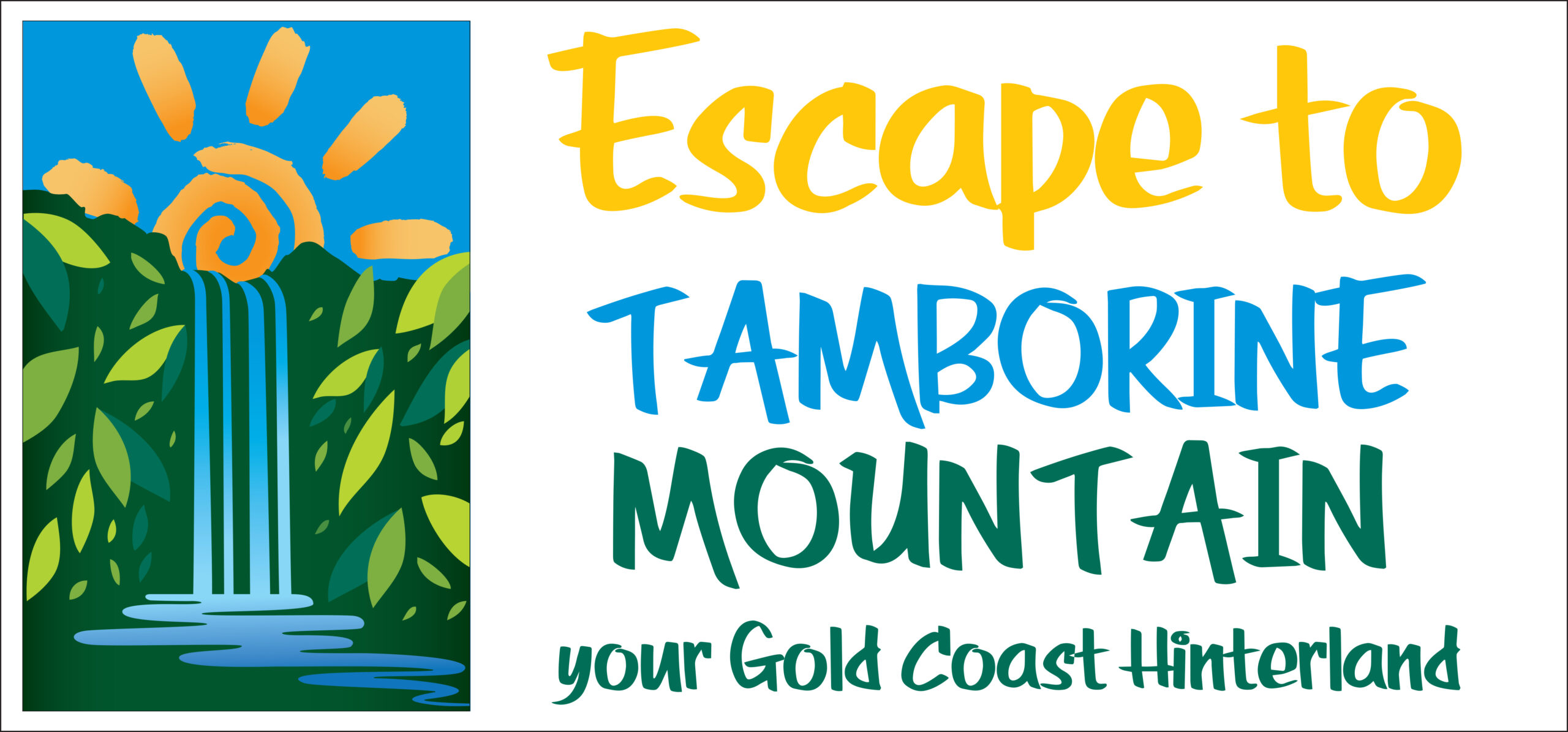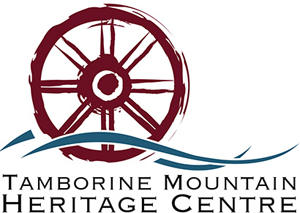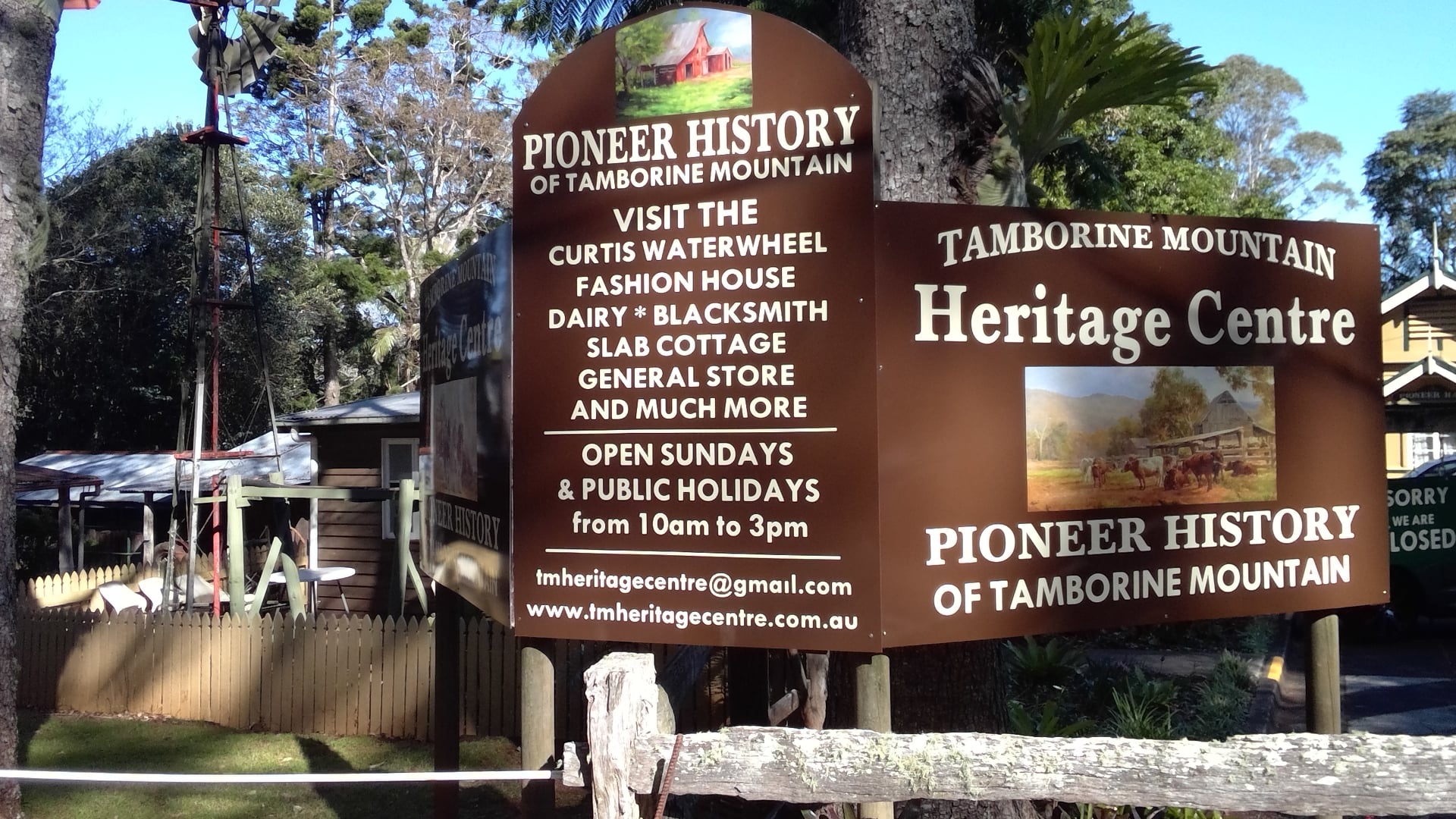
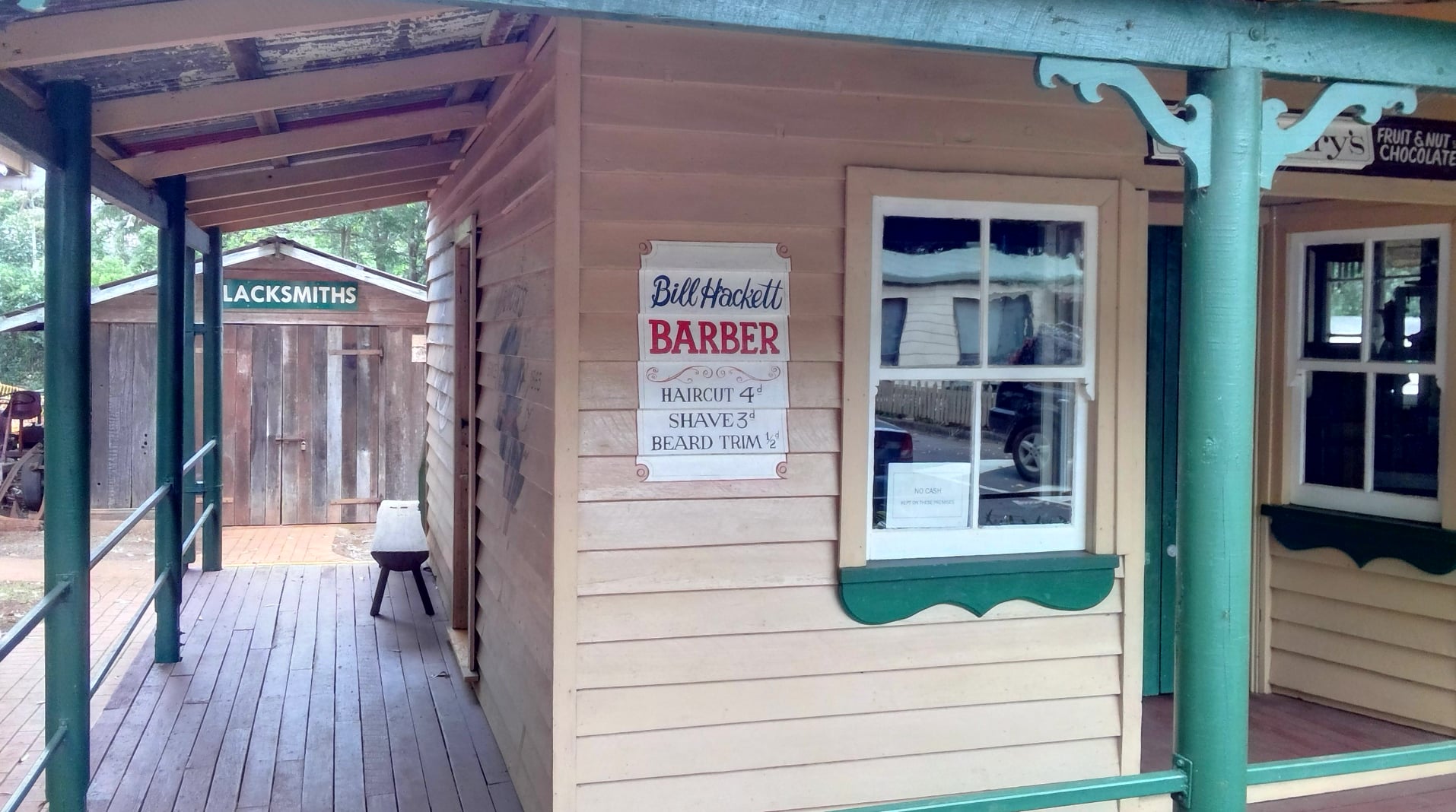
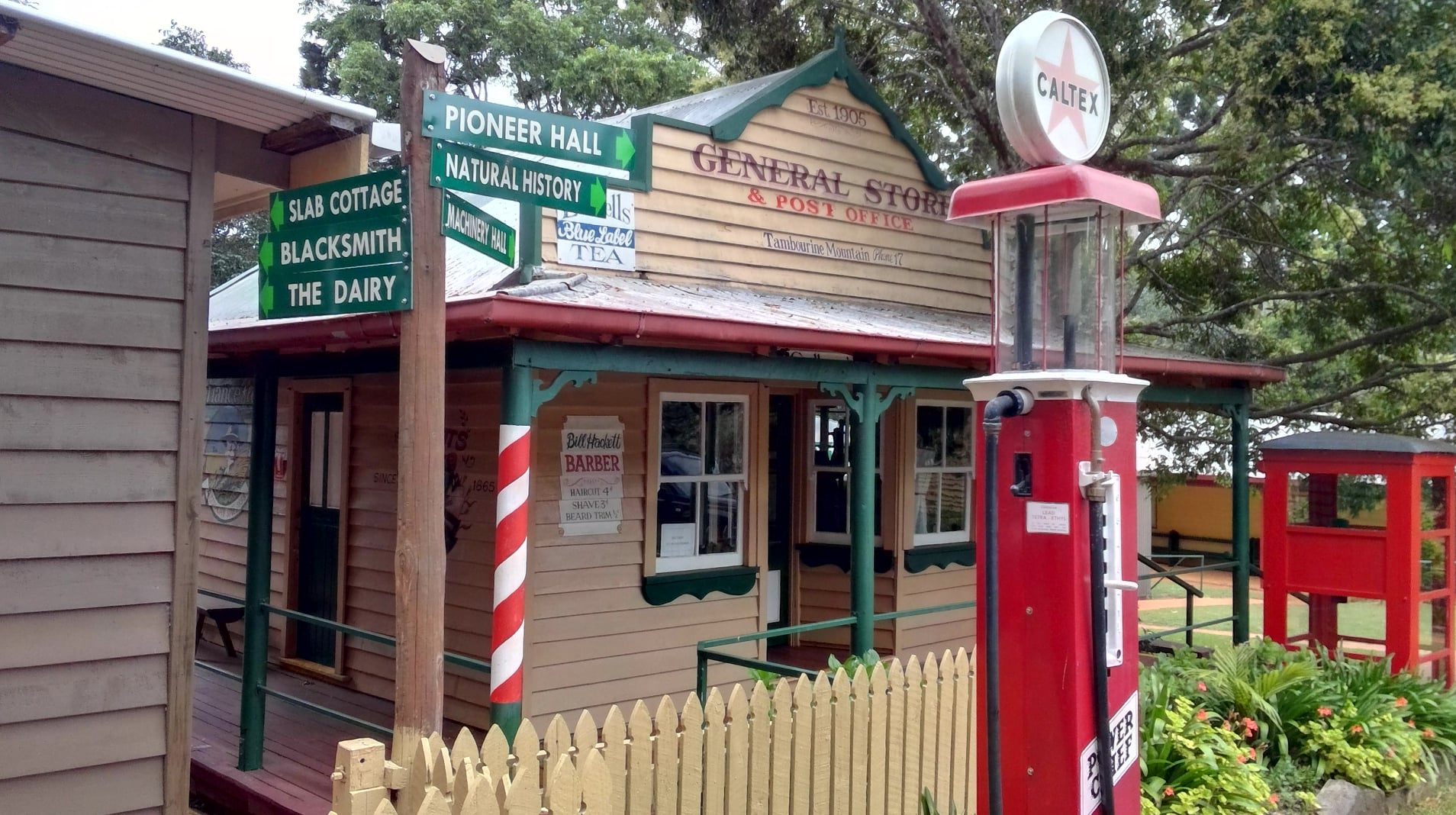
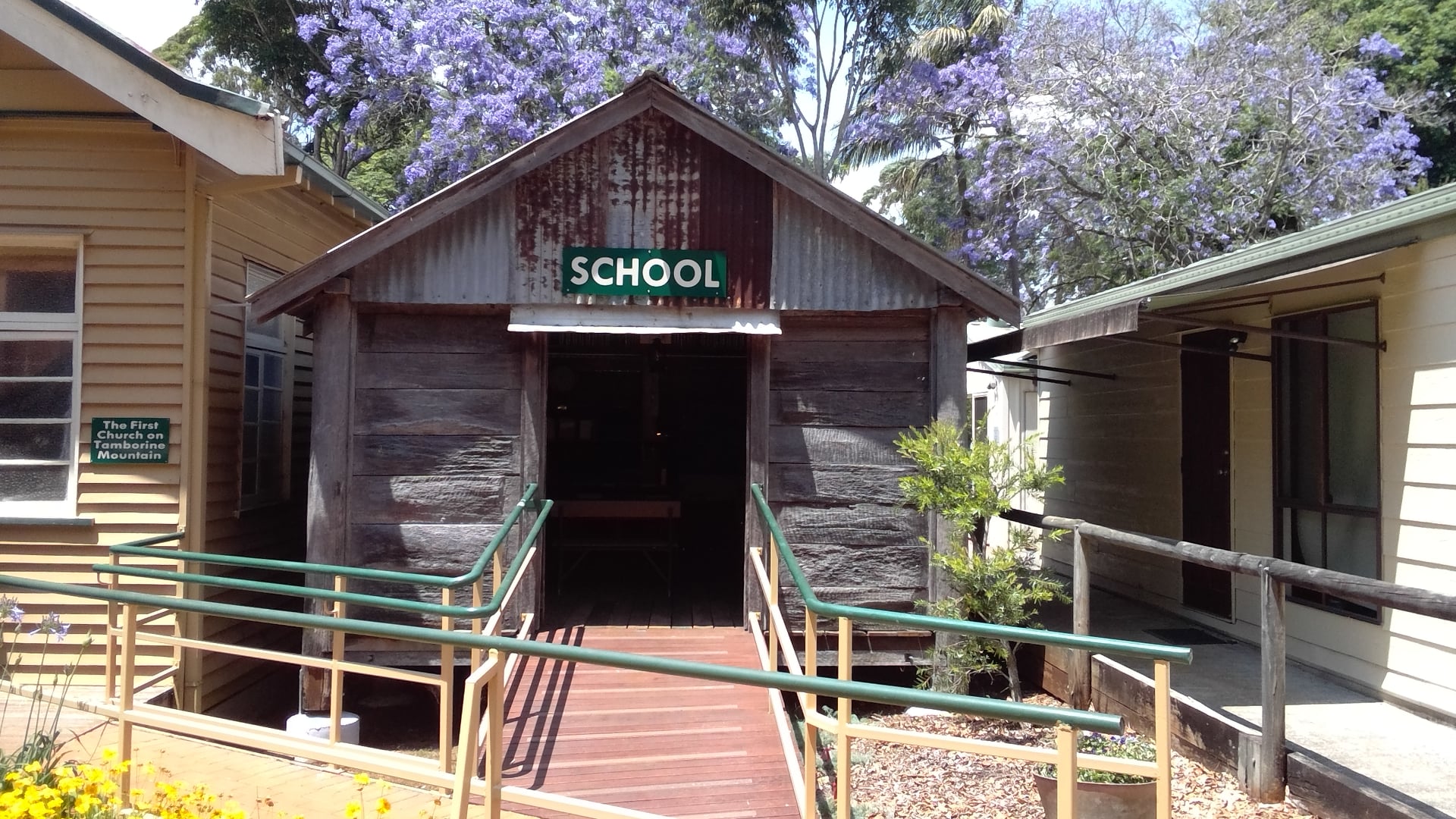
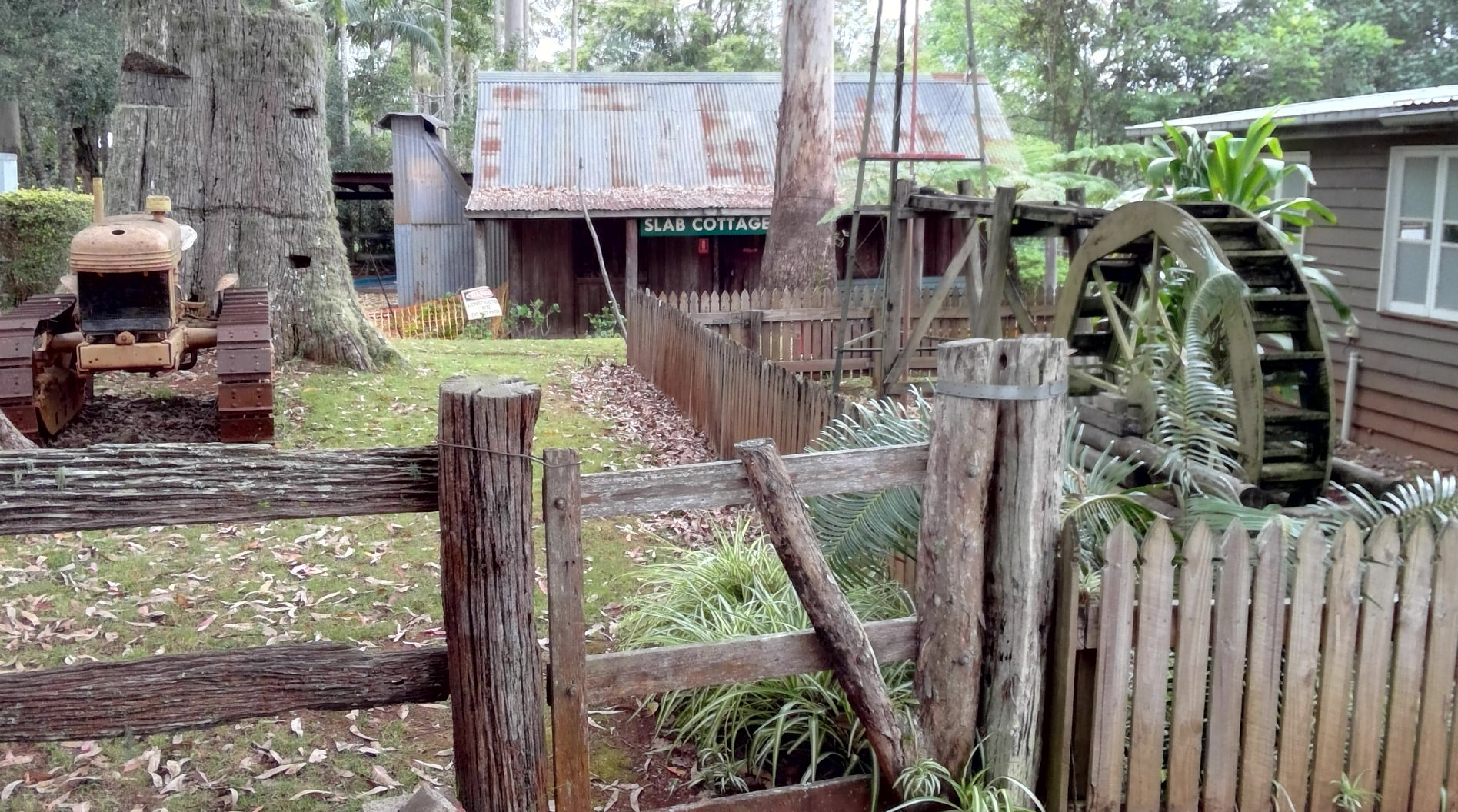
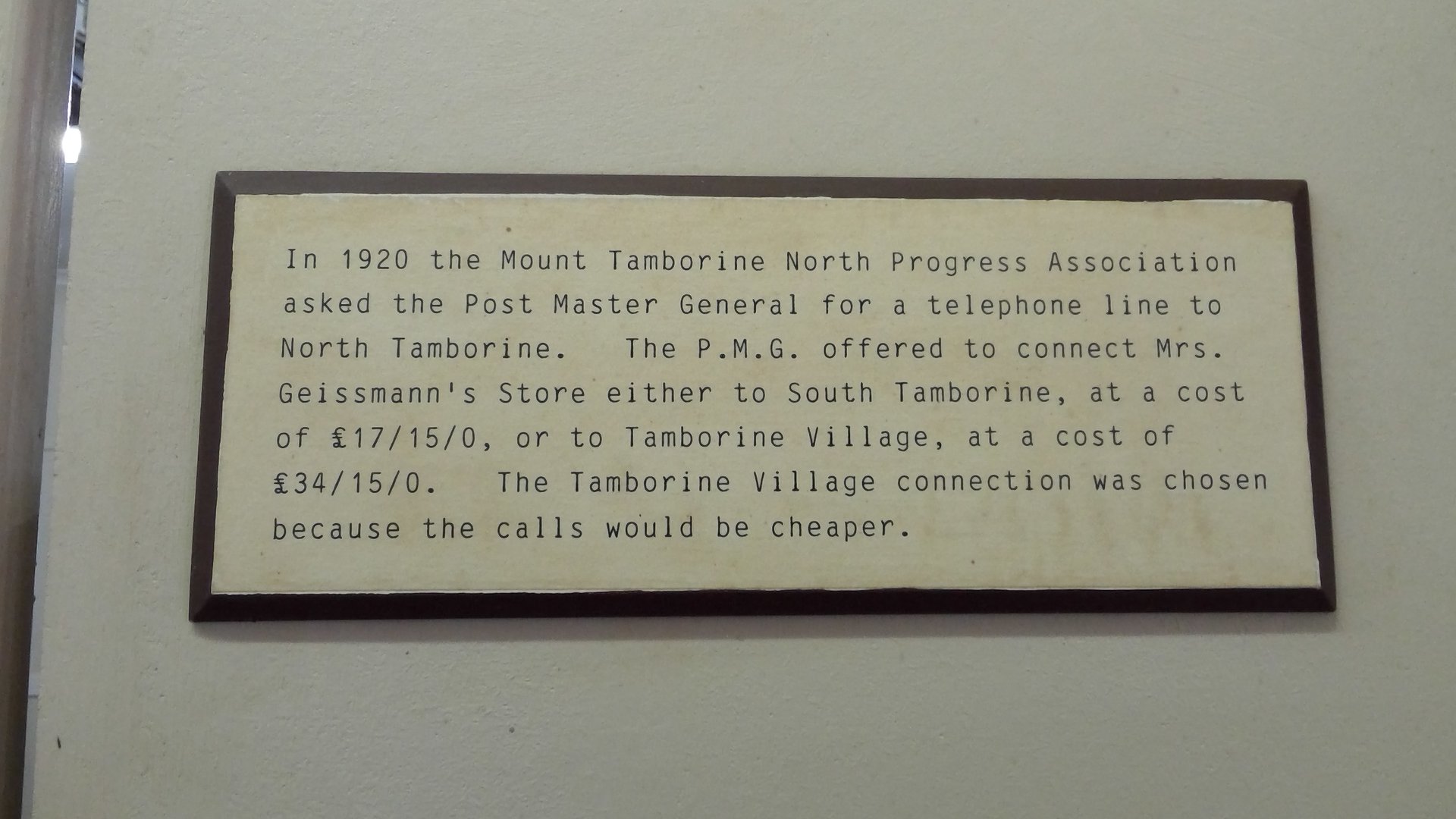
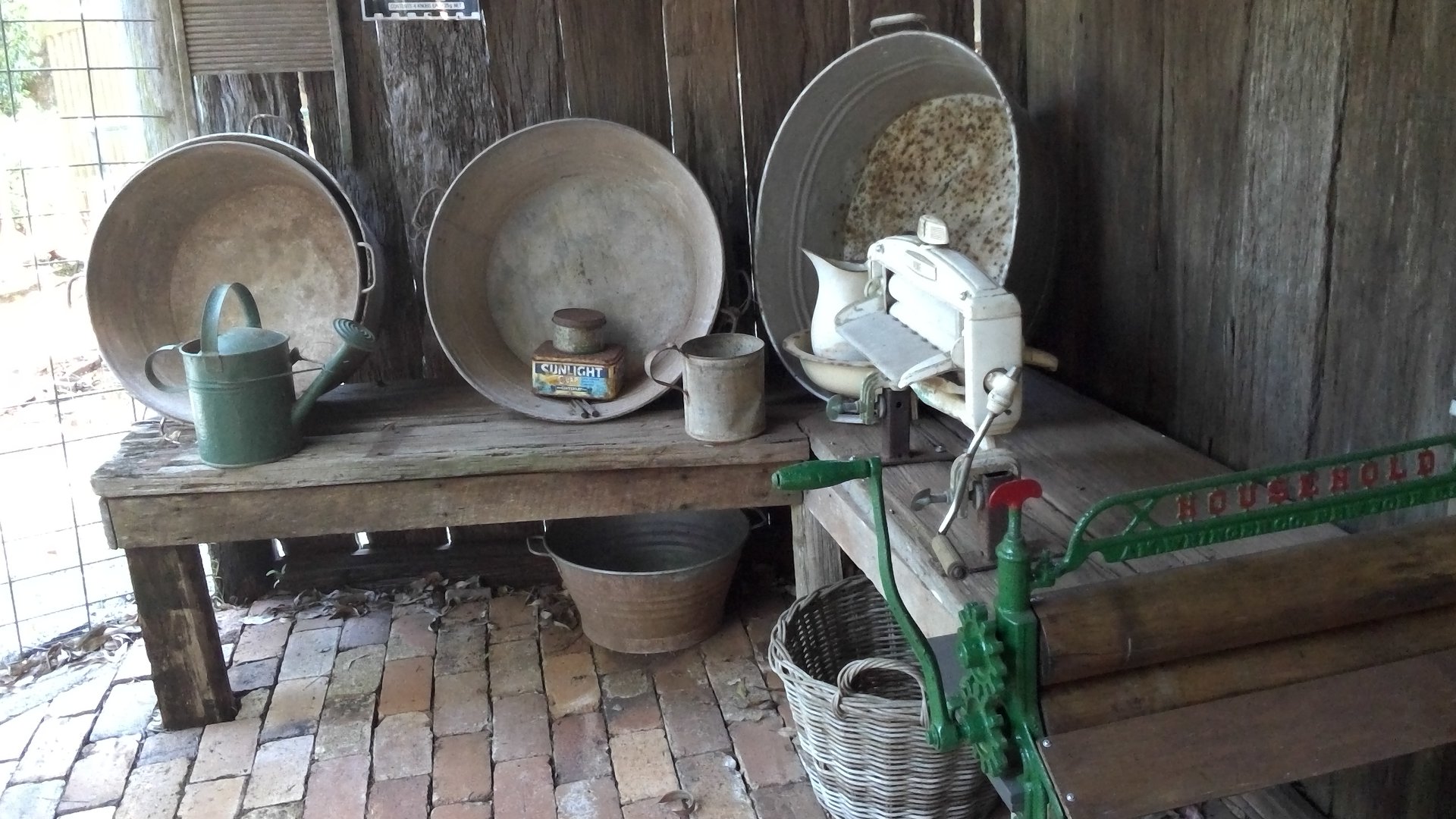
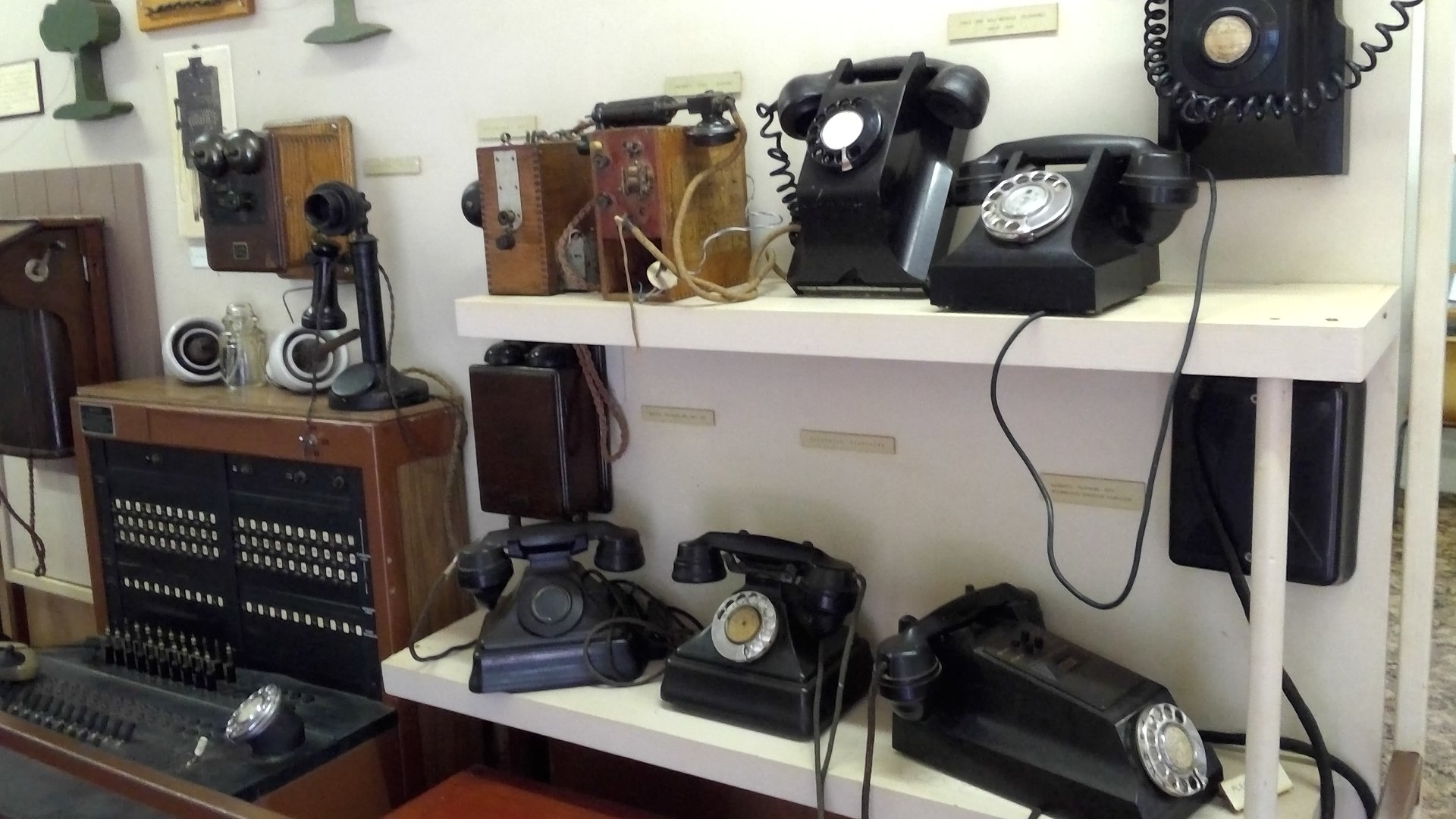
Tamborine Mountain Heritage Centre
Tamborine Mountain has a compelling unique character that arises out of the rich and diverse heritage of the region.
The Tamborine Mountain Heritage Centre is run by the Mountain’s Historical Society and features a small historic village, offering a snapshot of the life of early settlers.
Visitors can see one of the first churches to be erected on the mountain. Called the Pioneer Hall it has been relocated within the center’s grounds. It contains various dioramas of the mountain’s history as well as extensive displays of fashions from the early 1900s.
General Store:
Constructed out of material from a local farmhouse owned by Bernie and Mrs. Wilson, believed to be built in the 1930s.
Volunteers pulled the house apart and re-erected it in its present form. During demolition, a 1946 newspaper was found under the lino. The phone number on the facade is the original number of the first general store opened at North Tamborine in 1923.
The store comes complete with a barber’s chair and a haberdashery section. It was a trading centre and a meeting place. The hand-operated Caltex petrol bowser is a recent addition.
Slab Hut Cottage:
The slab cottage was built in 1986 following modern-day building regulations, to a reproduction of an early mountain house – without a floor being trodden earth or laid slabs. The cottage gives a feeling of the times and of being “lived in”.
Visitors can view many items used by the early settlers, and also check out a traditional “outhouse” complete with a resident redback spider at the rear of the building. This style of the outhouse was still in use in Brisbane in the late 1960s.
Water Wheel:
A large working model of the Curtis Water Wheel reveals to visitors how some early sawmills were powered. This working scale model depicted was built by our volunteers. The original was built in 1888 by early settlers Curtis brothers, out of forest timber. It had a 24-foot diameter wheel and was located on Cedar Creek upstream from the now-famous “Curtis Falls”.
The creek was dammed each night, and released in the morning to power the wheel which developed about ten horsepower. The sawmill closed down and was dismantled in the mid-1890s due to poor prices for timber. Some of the wood was used to make violins played at local dances.
Blacksmith Shop:
The blacksmith made things mostly out of iron, which involved the use of charcoal or coke. Consequently, the soot-blackened all, including the smith. “Black” smithing was very important to the mountain pioneers, but it was a hot and tiring job. Red hot metal was bent and twisted into all sorts of shapes. A model Smithy can be seen at work over a realistic model of a forge.
Fashion House:
Located in the Pioneer Hall visitors will find the “Fashion House”, featuring four rooms each with its own individual fashion theme. Items on display include babies clothing, glove-making patterns, fancy needlework, and old-time lace-making designs. Fashion exhibits date back to the 19th Century and includes accessories, household linen, and much more. One black gown on display was worn to the opening of the Australian Parliament in 1901.

